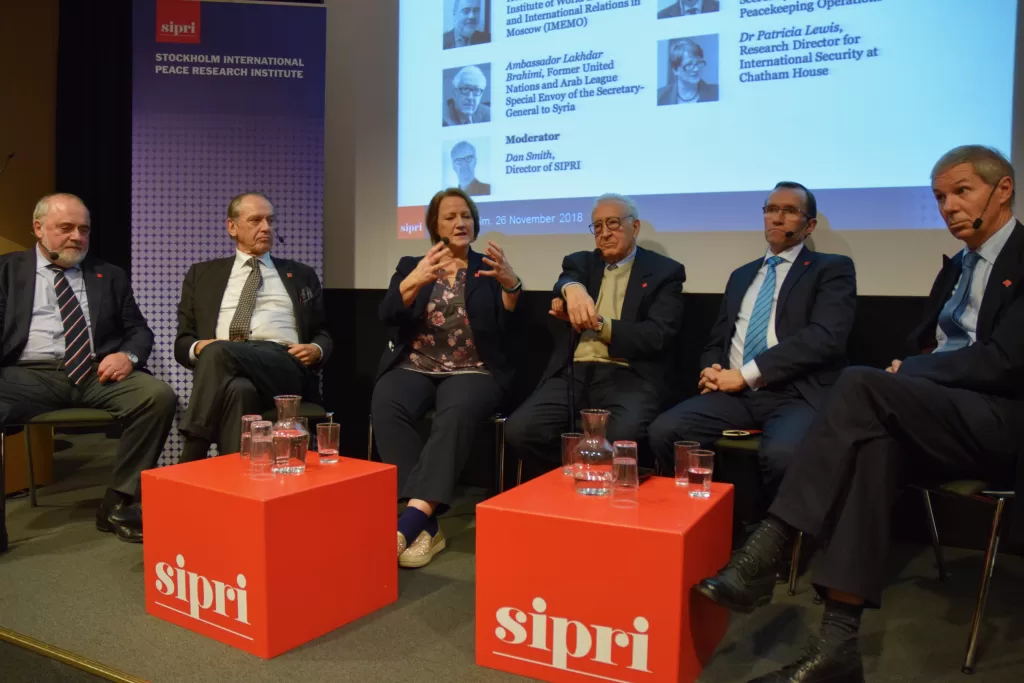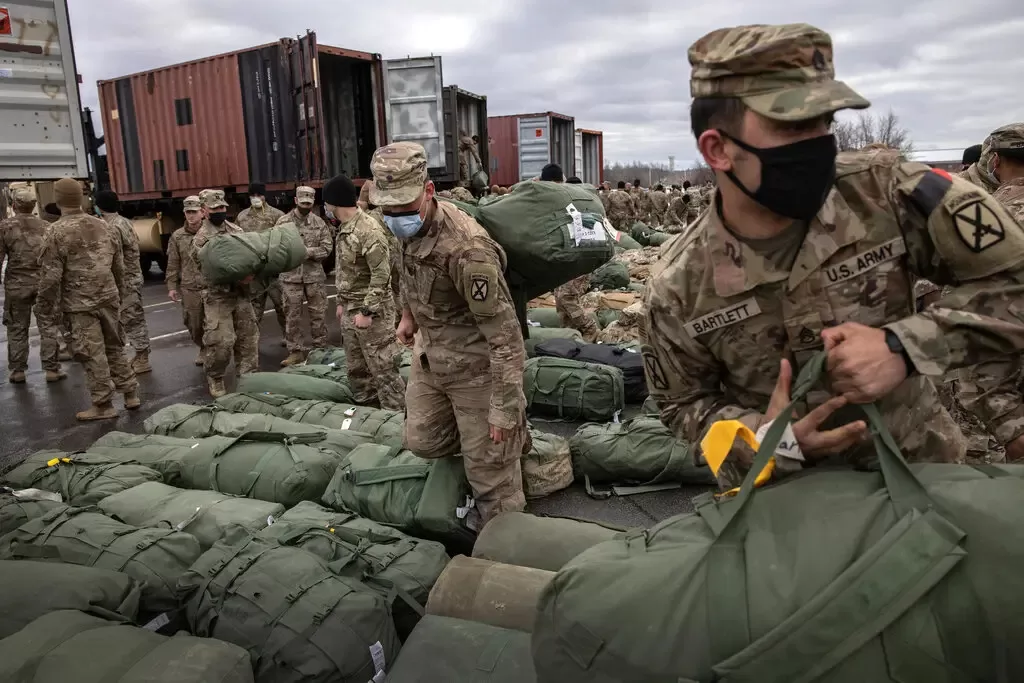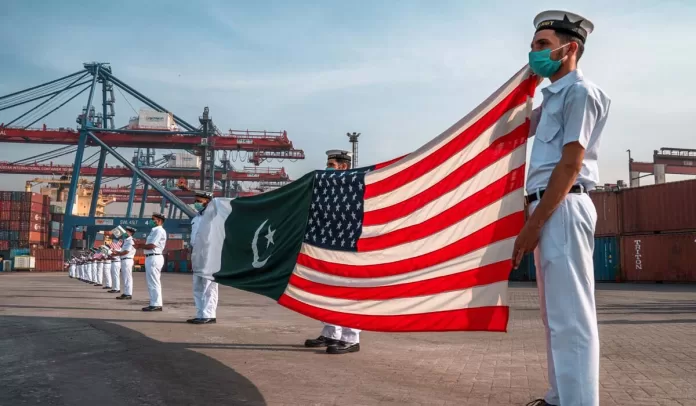Throughout history, the relationship between Pakistan and the United States has been tumultuous. It is important to view the changing dynamics of this relationship in a pragmatic manner, taking into account power, national interests, security, and sovereignty. From alliances to animosity and indifference, the relationship has been complex and ever-changing.
The US and Pakistan forged a military alliance immediately after Pakistan’s independence in 1947, in response to the former’s worries about Soviet expansionism in the region and the latter’s need for security support against a perceived threat from India. Armed support for Pakistan started to flow in after Washington and Islamabad agreed to cooperate on defence matters in 1954.
Pakistan’s involvement in the Central Treaty Organization (CENTO) and Southeast Asia Treaty Organization (SEATO) accords boosted security and military ties, but the United States’ refusal to provide help during the 1965 and 1971 wars harmed relations. The Soviet invasion of Afghanistan in 1979 brought together the military and intelligence agencies of the US and Pakistan, who collaborated covertly to help the Afghan Mujahideen struggle against the Soviets.
The Soviet invasion emphasized Pakistan’s and the United States’ interests in preventing communist growth in the area. After the Soviet Union left Afghanistan in 1988, the alliance deteriorated. Washington imposed sanctions in response to Pakistan’s nuclear test in 1998. Meanwhile, geopolitical developments brought about by the end of the Cold War pushed Washington closer to Pakistan’s archrival, India. Their relationship grew more strained as a result.
The US once more looked to Pakistan for support in its War on Terror (WOT) following the horrific events of September 11, 2001. Washington-Islamabad ties have fluctuated since then, characterized by cooperation, uncertainty, and efforts for counterterrorism and regional stability. Pakistan served as an essential partner in the WOT due to its close proximity to Afghanistan. Islamabad got considerable military and financial help in return for its cooperation.
However, both sides’ mistrust and suspicion grew over this time. Tensions escalated during the Trump administration due to public criticism of Pakistan’s counterterrorism operations and military funding suspension. However, with the change in the US government in 2021, there have been fresh efforts to interact.
The US has been one of the top providers of economic and military/security-related aid to Pakistan since 1947. According to an article published in the Economic and Political Weekly in 2011, from 1960 to 2002, Pakistan received 73.14 billion dollars in foreign assistance from the US and almost half of it was security related.

The military/security relations between the US and Pakistan peaked after the 9/11 attacks as Islamabad became the frontline ally of Washington in the WOT, now known as Global War on Terror (GWOT). Between 2002 and 2010, the US gave Pakistan over $19 billion, or more than $2 billion each year on average. Over $33 billion in security-related aid was given to Pakistan by the US between 2002 and 2019, including $14.6 billion in Coalition Support Funds (CSF). According to a September 2013 report to the US Congress, Pakistan has received a total of $25.91 billion in military and economic assistance from the US since September 11, 2001, including $2.5 billion in military assistance and $1.2 billion in economic assistance through the CFS. According to the Centre for Global Development, from 2002 to 2009, Pakistan received 70% of its aid for military purposes and 30% for economic purposes.
The main aim of providing huge sums of military aid to Pakistan in the aftermath of 9/11 was to assist in different ways in the GWOT, with an emphasis on Al-Qaida, the Taliban, and all types of terrorism and militancy in the region.
However, when the Trump administration took over, it significantly suspended military assistance to Pakistan. Under President Donald Trump, the United States withheld over 1.15 billion dollars in security aid to Pakistan in 2018, blaming Islamabad for harboring terrorist groups such as the Afghan Taliban and the Haqqani Network inside the country and refusing to take ‘decisive actions’ against them. President Trump accused Pakistan of offering the US nothing but ‘lies and deceit’ and a ‘safe haven’ for terrorists in exchange for 33 billion $ in aid over the previous 15 years. This period saw the start of a significant decline in trust between Islamabad and Washington. The US-China rivalry and the development of strong ties between New Delhi and Washington only added to the already deteriorating relations between the US and Pakistan.
China and Pakistan have been ‘all-weather friends’ and allies since the 1950s. Pakistan was one of the first countries to recognize China, and the diplomatic relations between China and Pakistan began on 21st May 1951 and since then, Beijing and Islamabad have enjoyed strong and prolonged relations for the past seven decades mainly due to geographical proximity and shared mutual national interests. Since the 1962 Sino-Indian War, China and Pakistan have maintained a strong and beneficial relationship.

The Sino-Pakistan Agreement-1963, which resulted in the settlement of border concerns between Pakistan and China, significantly enhanced the existing military relations. Pakistan receives a hefty amount of economic and military assistance from China as both Beijing and Islamabad view each other as strong strategic and political allies. Military ties between the two all-weather friendly neighbors began in the 1960s, and strategic partnership developed in 1972 and financial cooperation began in 1979.
As China’s global influence grows, it aims to modernize its military, foster military partnerships with other countries worldwide, and expand its arms exports. To achieve these objectives, China has been forging stronger defense ties with Pakistan through various measures such as diversifying military technologies, upgrading the Gwadar port, conducting joint military and naval exercises, collaborating on fighter plane production, and working together in the nuclear domain.
The Stockholm International Peace Research Institute’s (SIPRI) Arms Transfers Database shows China’s arms transferred to Pakistan in the last 15 years cost $8,469 million, nearly equaling the previous 50 years’ value of $8,794 million. China has supplied 75% of Pakistan’s imported arms since 2015. Pakistan’s 77% of arms imports from 2018 to 2022 came from China, according to SIPRI’s March 2023 fact sheet. SIPRI’s weaponry Transfers Database also shows a 92% decrease in US arms transfers to Pakistan between 2016 and 2020. The data shows the distrust of relations between Washington and Islamabad and a rapid rise in the military relationship between Beijing and Islamabad.
The US-Pakistan relationship was established during a unipolar world, with the US being the dominant global power. As world politics shift, the current era is characterized by strategic competition between the US and China. Pakistan is often seen as in China’s camp, while the US views India as a key partner in Indo-Pacific and South Asia to counter China. The US is dissatisfied with Pakistan’s Afghanistan strategy, while Pakistani strategic circles worry about potential US support for economic and security challenges. This perception challenges the US-Pakistan relationship and calls for reassessment.
In the already tense South Asian security environment – where the U.S. is making efforts to strengthen ties with India to counterbalance China and Pakistan maintains a formidable bond with China – focusing on the consequences of increasing US-China rivalry has become significant. The rapid escalation of the US-China competition, as well as the inclusive nature of US opposition to China, have resulted in an extremely vulnerable scenario for Pakistan. Moreover, the withdrawal of the US troops from Afghanistan in August 2021 further hardened the security and stability situation in Pakistan’s neighborhood. The US-Pakistan relationship will now rely heavily on security and counterterrorism due to concerns about terrorist organizations’ resurgence in Afghanistan and Pakistan’s tribal regions.

The US arrival in Afghanistan, its 20-year stay there, and its withdrawal in 2021 has been the most vital factor in shaping the US-Pakistan security/military relations in the 21st century. Islamabad remained a frontline ally of Washington throughout the period assisting the latter in the GWOT.
Due to geographical connectivity and a cross-border influx of terrorism from Afghanistan, Pakistan suffered from significant loss of life as well as economic and military losses over the years. Pakistan’s armed forces spokesperson said in 2021 that the country had 83,000 fatalities during the GWOT, which had cost the nation almost $150 billion in losses.
Pakistan was crucial in getting the Taliban to the negotiating table and signing the peace agreement on February 29, 2020, which eventually led to the US pullout from Afghanistan in August 2021. Pakistan being a responsible neighbor, played a significant part in delivering peace and stability by helping the peace process. The outcome of these efforts of Pakistan to ensure peace and stability in Afghanistan should have been in its favor in the form of a stable and prosperous neighborhood but the surge in cross-border terrorism, the re-emergence of Tehrik-e-Taliban Pakistan (TTP), and the rising terrorist attacks inside Pakistan’s territory after the US withdrawal indicates otherwise.
Pakistan is facing these consequences because the US left Afghanistan in haste and left behind advanced and sophisticated military equipment in Afghanistan. The vacuum and territory in Afghanistan that is left for the sworn enemies of Pakistan like the TTP and other terror groups working against Pakistan from inside Afghanistan and lastly the insufficient response or efforts of the de-facto government of the Taliban in preventing cross-border terrorism. Clearly, Pakistan despite being the main player in the peace process as well as a key ally of the US in the GWOT for the past 20 years, is paying high costs in the form of human lives, infrastructure loss, and dwindling economy.
According to various reports, around $7 billion worth of military equipment, including firearms, communications equipment, and even armored vehicles, were left behind when the United States pulled its troops from Afghanistan in 2021. Experts and security agencies claim that after the Taliban took control, some of these US military equipment and arms have appeared in Pakistan and have been used by terrorist organizations against law enforcement entities inside Pakistan. The TTP and ethnic Baluch separatist groups in Pakistan have enhanced their military capabilities by acquiring advanced U.S. weaponry from the black market, resulting in a rise in violence and terror attacks in Pakistan over the past two years.
The Pakistan Institute for Conflict and Security Studies reports a 56 percent rise in terror attacks in 2021 from the previous year, 27 percent in 2022 from 2021, and a 79 percent rise in militant attacks in the first six months of 2023. This is a grave concern for a country like Pakistan which is already facing a ‘polycrisis’ of economic decline, political instability, and climate change catastrophes. Being a global power and a long-term strategic ally of Pakistan, the role of the US in helping out Pakistan in these contemporary crises, is very vital both strategically as well as politically.
The role of the US economic and military relations with South Asian countries has always been very significant due to the geographical importance of the region. During the cold war, the US used the region’s key players, Afghanistan, and Pakistan against Soviet expansionist plans. But the rise of China as the main global competitor of the US in the 21st century has compelled the US to rethink and redirect its South Asian policies.
Important regional alliances like China-Pakistan and China-Russia have inclined the US towards India, which the former sees as a crucial partner in curtailing the Chinese influence in the region. The Indo-US civil nuclear deal of 2005, the 2005 Indo-US 10-year defence framework agreement that includes an increase of bilateral defence trade, their growing military and strategic partnership, and economic investment of the US in India, all helped in fostering a new era of Indo-US security cooperation.

This strategic alliance has severe ramifications for both China and Pakistan which is persuading both Beijing and Islamabad to reassess their approach towards them.
In view of the above discussion, it can be concluded that the future aspects of the US-Pakistan military/security relations will have a very vital say in the military and political environment of the region. Pakistan-US future military relations will be shaped by strategic interests and regional dynamics. Counterterrorism cooperation is crucial, with the US expecting Pakistan to continue battling terrorism within its borders and Pakistan expecting the US to contribute towards a stable and secure Pakistan and the region. Beyond counterterrorism operations, the US will need to look into strengthening defence relations with Pakistan. This involves collaborative exercises, procurement of defence equipment, and coordination on regional security concerns.
The United States must reconsider its approach to Pakistan as China’s influence grows through the China-Pakistan Economic Corridor (CPEC) to safeguard its interests in the South Asian region. Maintaining a balance between relationships with Pakistan and India will be a critical factor in future US strategies towards the region. The willingness of both countries to collaborate on common interests and their ability to resolve potential areas of conflict will determine the future prospects for military ties and relations between Pakistan and the US. Other factors such as economic aid, human rights, and China’s stance on the region will also impact their relationship, despite counterterrorism cooperation and regional stability remaining important drivers.
For Pakistan and the US to continue their constructive and fruitful relationship in the coming years, diplomatic engagement, and a willingness to find common ground will always be necessary.




